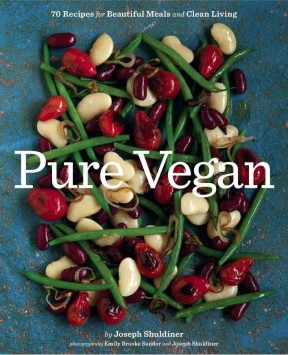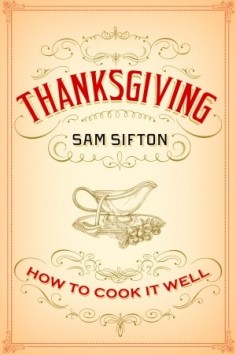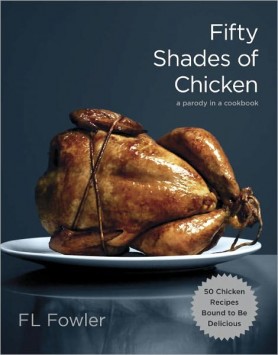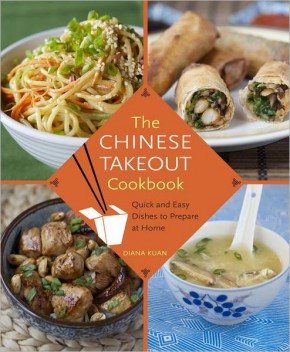VB6Eat Vegan Before 6:00 to Lose Weight and Restore Your Health . . . for Good
Six years ago, an overweight, pre-diabetic Mark Bittman faced a medical directive: adopt a vegan diet or go on medication. He was no fan of a lifelong regimen of pills, but as a food writer he lived—and worked—to eat. So neither choice was appealing
Six years ago, an overweight, pre-diabetic Mark Bittman faced a medical directive: adopt a vegan diet or go on medication. He was no fan of a lifelong regimen of pills, but as a food writer he lived—and worked—to eat. So neither choice was appealing.
His solution was a deal with himself. He would become a “flexitarian.” He adopted a diet heavy in vegetables, fruits, and grains by following a healthy vegan diet (no meat, dairy, or processed foods) all day. After 6:00 p.m. he’d eat however he wanted, though mostly in moderation. Beyond that, his plan involved no gimmicks, scales, calorie counting, or point systems. And there were no so-called forbidden foods—he ate mostly home-cooked meals that were as varied and satisfying as they were delicious, but he dealt with the realities of the office and travel and life on the run as best he could.
He called this plan Vegan Before 6:00 (VB6 for short), and the results were swift and impressive. Best of all, they proved to be lasting and sustainable over the long haul. Bittman lost 35 pounds and saw all of his blood numbers move in the right direction.
Using extensive scientific evidence to support his plan, the acclaimed cookbook author and food policy columnist shows why his VB6 approach succeeds when so many other regimens not only fail, but can actually lead to unwanted weight gain.
He then provides all the necessary tools for making the switch to a flexitarian diet: lists for stocking the pantry, strategies for eating away from home in a variety of situations, pointers for making cooking on a daily basis both convenient and enjoyable, and a complete 28-day eating plan showing VB6 in action. Finally, Bittman provides more than 60 recipes for vegan breakfasts, lunches, and snacks, as well as non-vegan dinners that embrace the spirit of a vegetable- and grain-forward diet.
If you’re one of the millions who have thought of trying a vegan diet but fear it’s too monotonous or unfamiliar, or simply don’t want to give up the foods you love to eat, VB6 will introduce a new, flexible, and quite simply better way of eating you can really live with . . . for life.
When Mark Bittman writes and talks about food, America listens. In his weekly New York Times food column, his monthly New York Times travel features, his bestselling cookbooks, and his award-winning public television series, Bittman grabs our attention–and keeps it.
Bittman’s bible of cooking, How to Cook Everything, has sold over a million copies. Dubbed “the new, hip Joy of Cooking” by the Washington Post and winner of both the Julia Child and the James Beard Awards (plus several others), it’s a must-have book for every American Kitchen, the favorite of millions of American cooks. In 2005 Broadway Books published his eagerly awaited follow-up: The Best Recipes in the World.
His weekly cooking column, The Minimalist, is followed by more than two million readers, including home cooks and professionals, and has profoundly influenced American cooking since its inception. (Three award-winning cookbooks have resulted from his column: The Minimalist Cooks at Home; The Minimalist Cooks Dinner; and The Minimalist Entertains. These three will be published in an omnibus paperback edition in the spring of 2007, entitled Mark Bittman’s Quick and Easy Recipes from the New York Times.)
And when Bittman branches out, his fans follow: his recent New York Times piece on the best of Tuscan food was the paper’s travel section’s best-read article ever, reaching nearly three million readers.
In the late ’90s, Bittman formed a best-selling collaboration with the internationally celebrated chef, Jean-Georges Vongerichten. Their classic book, Jean-George: Cooking at Home with a Four-Star Chef, won a James Beard award and is widely considered to be among the most accessible chef’s cookbooks ever published. That was followed in 2000 with Simple to Spectacular, the groundbreaking cookbook that shows readers how to master a basic recipe then take it in almost limitless directions.
Bittman’s PBS series, Bittman Takes on America’s Chefs, was awarded the Best National TV Cooking Series of 2005 by the James Beard Foundation. In April ’07 his second series, The Best Recipes in the World, will premiere. In the fall of ’07 Wiley will publish the groundbreaking How to Cook Everything Vegetarian, and Bittman is currently completing the revision of How to Cook Everything, to be published in fall 2008, the tenth anniversary of the original.
A regular on NBC’s The Today Show and NPR’s All Things Considered, Bittman has been profiled in newspapers and magazines including Food & Wine, Real Simple, People, The Washington Post, the Los Angeles Times, The Boston Globe, The Dallas Morning News and more.
Mark Bittman is working on his first novel, and is a licensed pilot who continues to humbly cook dinner for friends and family several times a week.
Chickpea Ratatouille
Makes: 4 servings TiMe: about 11⁄2 hours, largely unattended
Classic ratatouille—a mixture of summery vegetables stewed with olive oil and herbs—is stellar and satisfying on its own. Add chickpeas (or cannellini, or lima beans) and you have a super-hearty main dish. Eggplant, zucchini, and peppers are the usual vegetables, but consider alternatives like roughly chopped hearty greens—escarole or kale, for example. Just be sure to keep the tomatoes for moisture.
1 pound eggplant (smaller ones are better), peeled if you like, and cut into large chunks
3⁄4 pound zucchini, cut into large chunks
1 pound Roma (plum) tomatoes, cored and chopped, or 1 28-ounce can, drained
1 onion, sliced
2 red or yellow bell peppers, cored, seeded, and sliced
5 garlic cloves, halved
1 teaspoon salt, plus more to taste
Black pepper to taste
4 tablespoons olive oil
3 cups cooked or canned chickpeas, drained
1 tablespoon chopped fresh thyme or rosemary, or 1⁄2 cup chopped fresh basil or parsley
1 Heat the oven to 425°F. Combine all the ingredients except the oil, chickpeas, and herbs in a large roasting pan. Drizzle with the oil and toss to combine.
2 Transfer to the oven and roast, stirring occasionally, until the vegetables are lightly browned and tender and some water has released from the tomatoes to create a sauce, 30 to 40 minutes.
3 Add the chickpeas, stir, and return to the oven until the beans heat through, 5 to 10 minutes. Add the herbs and stir. Taste and adjust the seasoning and serve hot, warm, or at room temperature.
nutritionaL info:
Calories: 435 • Cholesterol: 0mg • Fat: 19g • Saturated Fat: 3g • Protein: 15g • Carbohydrates: 56g • Sodium: 803mg • Fiber: 18g • Trans Fat: 0g • Sugars: 17g
Eggplant Un-parmesan
Makes: 4 servings TiME: about 1 hour
This take on eggplant Parmesan proves that (a) you don’t need a lot of oil to cook eggplant, and (b) you don’t need gobs of cheese to make it delicious. Try using zucchini or portobello mushrooms as variations, or serve the vegetables and tomato sauce over polenta for a more sub- stantial meal.
If you can’t find whole wheat breadcrumbs (panko-style are best), make your own by pulsing lightly toasted whole-grain bread in the food processor or blender.
2 1⁄2 pounds eggplant
5 tablespoons olive oil
11⁄4 teaspoons salt, plus more to taste
Black pepper to taste
1 onion, chopped
2 tablespoons minced garlic
2 28-ounce cans diced tomatoes, with their juice
1 cup chopped fresh basil leaves
1 cup whole wheat breadcrumbs, preferably coarse-ground
1 Heat the oven to 450°F and position two racks so that they’ve got at least 4 inches between them. Cut the eggplant crosswise into 1⁄2-inch- thick slices and arrange them on two rimmed baking sheets.
2 Use 2 tablespoons of the oil to brush the top of each eggplant slice and sprinkle them with 1⁄2 teaspoon salt and some pepper. Roast the eggplant until the slices brown on the bottom and sides, 10 to 15 minutes; turn and cook the other side until they’re crisp in places and golden, another 5 to 10 minutes. When they finish cooking, remove them from the oven and lower the heat to 400oF.
3 Meanwhile, put 2 tablespoons of the oil in a large skillet over medium heat. When it’s hot, add the onion, sprinkle with another 1⁄2 teaspoon of salt, and cook, stirring occasionally, until soft, 3 to 5 minutes. Add the garlic and cook, stirring, for 1 minute. Add the tomatoes and cook, stirring occasionally, until the tomatoes break down and the mixture comes together and thickens, 20 to 25 minutes. Taste and adjust the seasoning.
4 Cover the bottom of a 9 by 13-inch baking dish with about 1⁄2 inch of the tomato sauce. Nestle a layer of eggplant into the sauce and top with some of the basil. Cover with a thin layer of tomato sauce and repeat until all the eggplant is used up; reserve some of the basil for serving. Sprinkle with the breadcrumbs, the remaining 1⁄2 teaspoon salt, and lots of pepper, and drizzle with the remaining tablespoon of oil. Simmer the remaining sauce (you should have about 2 cups) over medium-low heat, stirring occasionally, while the eggplant bakes.
5 Bake until the breadcrumbs are golden and the sauce has thickened, 15 to 20 minutes; let rest for 10 minutes before serving. Serve hot, warm, or at room temperature, garnished with the remaining basil; pass the remaining sauce at the table (or refrigerate or freeze it for another use).
Zucchini un-parmesan Substitute 2 pounds zucchini (sliced lengthwise, preferably) for the eggplant and proceed with the recipe. Use mint instead of basil, if you like.
portabella un-parmesan Use 11⁄2 to 2 pounds portabella mushrooms instead of eggplant; remove their stems but leave them whole. Proceed with the recipe, only make one, not two layers. Use parsley instead of basil if you like.
eggpLant un-parmesan with polenta Make a small batch of polenta (see page 235) and layer the tomato sauce, then the eggplant, the basil, and the polenta in a baking dish. Repeat until all the ingredients are used up. Top with breadcrumbs, if you like (it’s not necessary). Bake as directed.
nutritionaL info (using all the sauce): Calories: 411 • Cholesterol: 0mg • Fat: 22g • Saturated Fat: 3g • Protein: 9g • Carbohydrates: 53g • Sodium: 1221mg • Fiber: 16g • Trans Fat: 0g • Sugars: 17g
lunch
Breakfast Pilaf, Sweet or Savory
Makes: 4 servings TiME: 45 To 60 Minutes
If you think you don’t have the time to make hot cereal, think again. Yes, this takes a while, but most of the cooking here is unattended, and if you make double (or triple) batches, you can do the actual cooking once and reheat servings in the microwave all week long.
Rice is wonderful in the morning, but you can use quinoa or cracked wheat here without changing the technique at all. Steel-cut oats are good, too. Any of these will be ready with just 20 to 25 min- utes of cooking time in Step 3.
I encourage you to try the savory variation and, for more grain and stir-in ideas, see the sidebar.
1 tablespoon olive or vegetable oil
11⁄3 cups any long- or short-grain brown rice
1⁄2 teaspoon salt
1⁄4 teaspoon each cinnamon, nutmeg, and ginger
2 tablespoons maple syrup 3 cups fruit, chopped if necessary
1⁄2 cup chopped fresh mint, for garnish (optional)
1 Put the oil in a large, deep skillet or medium saucepan over medium heat. When it’s hot, add the rice. Cook, stirring, until the kernels are glossy, completely coated with oil, and have started to color, 3 to 5 minutes.
2 Add a pinch of salt and the spices and cook, stirring, until fragrant, about 1 minute. Add 13⁄4 cups water, the syrup, and half of the fruit: stir once or twice, and bring to a boil. Lower the heat so the mixture bubbles gently and cover the pan.
3 Cook until most of the liquid is absorbed and the rice is just tender, 20 to 40 minutes, depending on the rice. Uncover, stir in the remaining fruit and half of the mint, if you’re using it. Replace the lid, and remove from the heat. Let the pilaf rest for at least 5—or up to 20—minutes. Taste and adjust the seasoning. Fluff the mixture with a fork and serve, topped with the remaining mint.











Leave a Reply